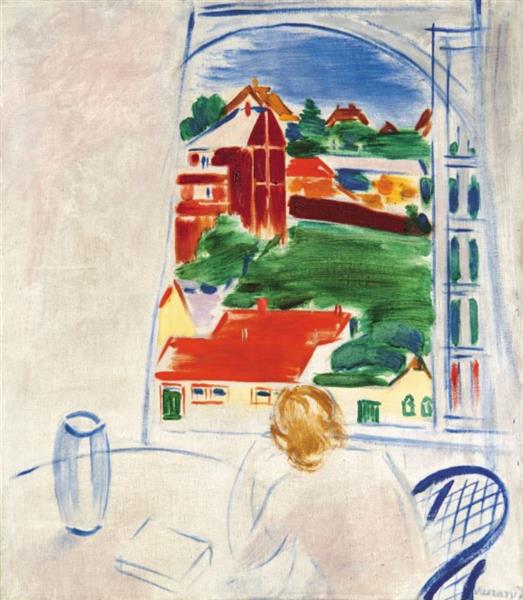Description
"Tabán 1930 - 1930" by János Vasaryry is a visual testimony of ingenuity and the author's ability to capture the essence of a specific time and place on his canvas. Painted in 1930, this work reflects Vasary's deep interest in urban scenes and everyday life. Vasary, a Hungarian artist born in 1867 and died in 1939, is known for his versatile style and his ability to integrate impressionist and post -impressionist influences into his work. This painting is no exception.
The composition of "Tabán 1930 - 1930" is vibrant and dynamic, with a clear approach to the architectural environment of the Barrio de Tabán, an ancient part of Budapest that, in the 1930s, was in the process of modernization. This area, known for its cobbled streets and picturesque houses, comes alive under the Brush of Vasary. In the fabric a fusion of traditional architecture and elements of an incipient modernity is perceived.
The use of color by Vasaryry in this painting is particularly worthy of mention. Warm and terrible tones dominate the scene, contrasting with the softest and colder brushstrokes used for details and shadows. This colored contrast not only adds depth to the composition, but also evokes a sense of nostalgia, reminding the spectators of the history and transformation of the neighborhood. The buildings are accurately outlined but without rigidity, providing a balance between the structural and the organic.
By carefully observing the work, it can be noted that there are no human figures present, which is a distinctive feature compared to other urban works of Vasaryry that usually include figures to add life and movement. The absence of human characters in "Tabán 1930 - 1930" could be interpreted as a deliberate attempt by the artist so that the viewer focuses his attention on architecture and urban landscape itself, perhaps reflecting a melancholy by the transformation that this area was suffering historical city.
The Vascary technique, characterized by its vigorous brushstrokes and a loose application of the pigment, adds a palpable texture to the paint. The artist manages to capture the light so that he highlights both the facades of the buildings and the inconsistencies of the land, giving the scene an almost tangible vibration. This style distinguishes the work in the context of the urban painting of the time, since Vasley opts for a less idealized and more visceral representation of the city.
In terms of its historical relevance, "Tabán 1930 - 1930" is in a period of considerable artistic and social evolution in Europe. At a time when many artists were attracted to modernist currents, Vascary remains faithful to a style that, although deeply personal, also reflects the influence of impressionism and post -impressionism both in their technique and in their subject.
In summary, "Tabán 1930 - 1930" is a work that not only stands out for its technique and color use, but also for its ability to encapsulate a particular moment in the history of Budapest. János Vascary, through his detailed and sensitive gaze, invites us to appreciate the ephemeral beauty of a city in transition, deeply resonating with those that value both history and the evolution of the urban landscape.
KUADROS ©, a famous paint on your wall.
Hand-made oil painting reproductions, with the quality of professional artists and the distinctive seal of KUADROS ©.
Art reproduction service with satisfaction guarantee. If you are not completely satisfied with the replica of your painting, we refund your money 100%.

